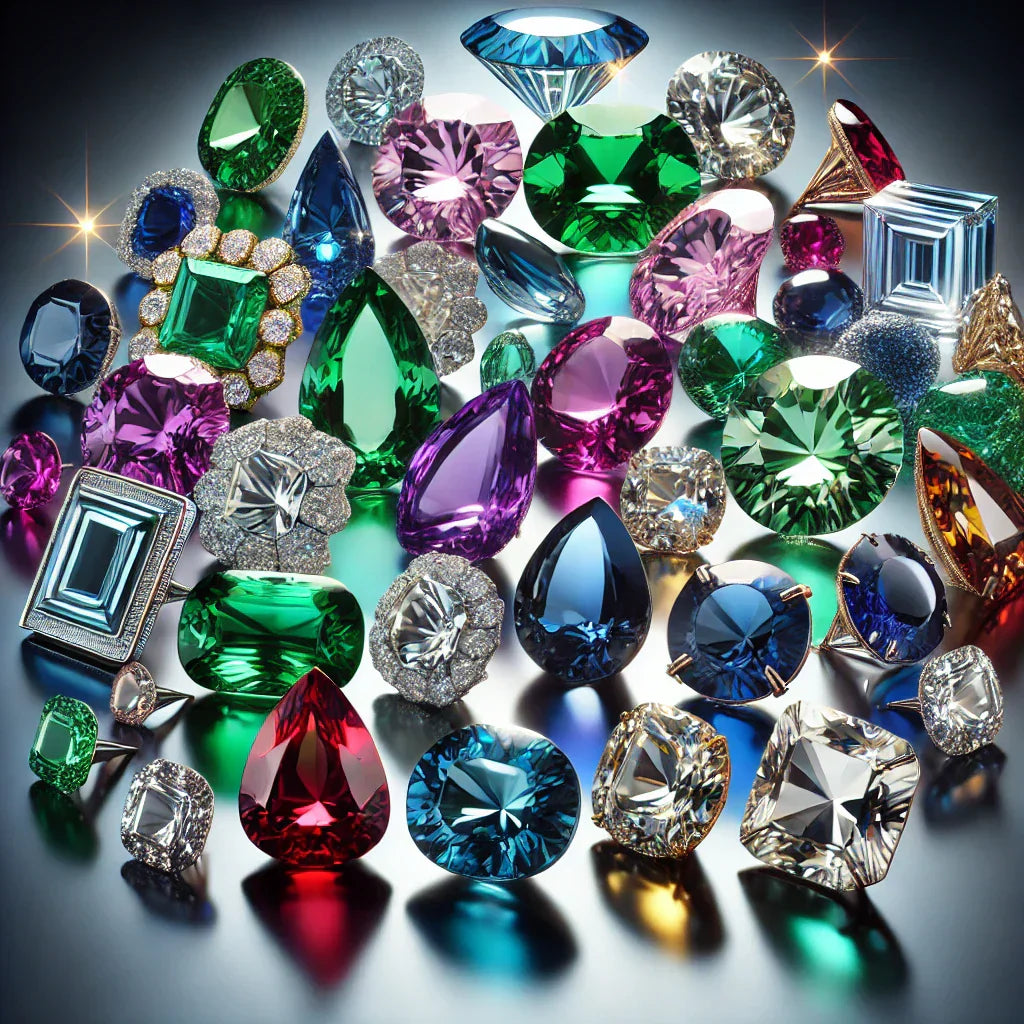
Gemstone Size Secrets: What You Need to Know
When purchasing or evaluating gemstones, you’ll frequently encounter two key measurements: carat weight and millimeter size. While these terms are often used interchangeably, they refer to distinct aspects of a gemstone’s dimensions. Understanding the difference is crucial for making informed decisions, whether you’re buying an engagement ring, a fine gemstone pendant, or investing in rare jewels.
In this blog, we’ll break down the concepts of carat weight and millimeter size, how they relate to different gemstones, and why knowing both measurements is essential for selecting the perfect stone.
What Is Carat Weight?
Carat weight is a measurement of a gemstone’s mass. One carat (ct) is equivalent to 20 milligrams (0.2 grams). Carats are further divided into 100 points, meaning that a half-carat gemstone can also be expressed as 50 points (0.50 ct).
Carat weight is a standard measurement used in the jewelry industry, particularly for diamonds and other precious stones. However, carat weight alone does not determine a gemstone’s physical size. The density (or specific gravity) of the gemstone influences how large it appears in relation to its carat weight.
Carat Weight vs. Perceived Size
Two gemstones of the same carat weight can look very different in size depending on their density. For example:
• Diamonds (specific gravity ~3.52) tend to appear larger compared to rubies (specific gravity ~4.00) of the same carat weight because rubies are denser.
• Amethysts (specific gravity ~2.65) will appear larger than both diamonds and rubies of the same carat weight.
Thus, a 1-carat amethyst will typically look bigger than a 1-carat diamond, even though they weigh the same.
What Is Millimeter Size?
Millimeter size (mm) refers to the actual physical dimensions of a gemstone, specifically its length, width, and depth. This measurement gives a clearer idea of how large a gemstone will appear when set in jewelry.
For example, a round 1-carat diamond typically measures about 6.4–6.5 mm in diameter, but the same 1-carat weight in a round sapphire may measure closer to 6.0 mm because sapphires are denser.
Gemstone size is often measured in length × width × depth (for fancy shapes like ovals, cushions, and emerald cuts) or by diameter (for round stones).
Why Millimeter Size Matters More Than Carat Weight
While carat weight is a standard industry measurement, millimeter size is often more important for consumers. Here’s why:
1. Visual Appearance
When choosing a gemstone for an engagement ring or pendant, most buyers are concerned with how large the stone looks rather than how much it weighs. A well-cut gemstone with a larger surface area can appear more impressive, even if it has a lower carat weight.
2. Setting and Proportions
Jewelry settings are designed for specific gemstone dimensions, not weights. For instance, if you’re replacing a stone in an existing setting, knowing the millimeter size ensures a perfect fit.
3. Cut Quality and Spread
Some gemstones are cut deeper, while others are cut shallower to maximize size. For example:
• A well-cut round brilliant diamond of 1.00 ct typically measures 6.4–6.5 mm in diameter.
• A shallow-cut diamond of 1.00 ct may appear larger at 6.8 mm but could lack brilliance.
• A deep-cut diamond of 1.00 ct may look smaller at 6.2 mm but could have more sparkle.
Thus, understanding the millimeter size and cut proportions ensures you’re getting the best balance of brilliance and size.
Comparing Carat Weight and Millimeter Size Across Gemstones
To better understand how different gemstones compare in size and weight, let’s look at a few examples
|
Carat Weight |
Diamond (mm) |
Sapphire (mm) |
Ruby (mm) |
Amethyst (mm) |
Moissanite (mm) |
|
0.25 ct |
4.1 mm |
3.8 mm |
3.7 mm |
4.3 mm |
4.2 mm |
|
0.50 ct |
5.2 mm |
4.9 mm |
4.8 mm |
5.4 mm |
5.3 mm |
|
1.00 ct |
6.5 mm |
6.0 mm |
5.9 mm |
7.0 mm |
6.7 mm |
|
2.00 ct |
8.2 mm |
7.4 mm |
7.3 mm |
9.0 mm |
8.5 mm |
As seen in the chart, amethysts appear significantly larger than diamonds, sapphires, and rubies of the same weight due to their lower density. Moissanite, a popular diamond alternative, also tends to appear slightly larger than diamonds of the same carat weight.
Choosing the Right Measurement When Buying a Gemstone
When shopping for gemstones, should you focus on carat weight or millimeter size? The answer depends on your priorities:
• If you want a gemstone that appears larger, prioritize millimeter size. A 1-carat sapphire will look smaller than a 1-carat diamond, so you may need to choose a higher carat weight for the same visual effect.
• If you’re replacing a stone in an existing setting, focus on millimeter size. Jewelry settings are made to fit specific dimensions, and a gemstone with the wrong size (even if it has the right carat weight) may not fit.
• If you’re comparing value, consider both carat weight and face-up size. A deeper-cut gemstone may weigh more but look smaller from the top. Understanding the dimensions helps ensure you’re getting the best visual size for your budget.
Conclusion
Understanding the difference between carat weight and millimeter size is essential for choosing the perfect gemstone. While carat weight determines the gemstone’s mass, millimeter size dictates how large it appears when set in jewelry. Because different gemstones have different densities, two stones of the same weight can look vastly different in size.
For buyers, millimeter size is often the more practical measurement, especially when comparing different types of gemstones or selecting stones for specific jewelry settings. By considering both weight and dimensions, you can make a more informed decision and ensure you get the perfect gemstone for your needs.
Whether you’re shopping for a dazzling diamond, a vibrant sapphire, or a statement-making amethyst, knowing these key differences will help you choose the best stone for your style and budget.
